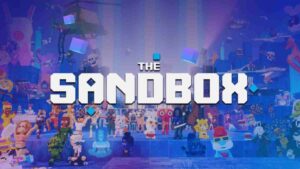Beatable isn’t just another beat slasher or dance clone. It’s a rhythm game that drops the usual glowing cubes and leans into pure body motion asking players to clap, snap, hit, and sweep through sound like they’re part of the music itself.
Currently available on Meta Quest via App Lab, the game blends performance and gameplay in a way that makes rhythm feel physical, improvisational, and surprisingly intimate. It’s not about scoring perfect lines. It’s about becoming part of the beat literally.
Rhythm through motion, not abstraction
The core of Beatable is built on gestures. You don’t just swing at notes. You clap above your head, snap near your waist, punch wide arcs, or slam downward with force all mapped to specific rhythmic inputs. The tracking system reads your physicality, and timing matters more than precision placement.
Each level is more like a choreographed movement session than a traditional rhythm chart. Visual cues are minimalist, allowing the music to guide your body rather than overwhelming you with symbols and flashing icons.
The result is a more expressive style of rhythm game. You’re not just reacting to beats. You’re interpreting them — with your limbs, your posture, and even your breath. It feels less like a test and more like a jam session with rules.
A soundtrack built for presence
Beatable’s audio design avoids overused EDM loops or nostalgic pop remixes. Instead, tracks lean into layered percussion, sharp tempo shifts, and clean, beat-heavy compositions that leave space for movement. Each song is constructed around how it feels to move through it, not just how it sounds.
This focus supports the gameplay mechanics. Songs aren’t loaded with dense note spam. They breathe, allowing players to hit, pause, and move without rushing. That makes the game approachable but still rhythmically challenging once you’re inside the groove.
Sound also reacts to performance, subtly adjusting or fading based on how closely you’re syncing up not in the punitive sense, but to reinforce presence. That feedback loop turns each level into something performative rather than purely mechanical.
Visual minimalism that highlights form
The visual language of Beatable is clean and deliberate. No busy arenas. No flashy avatars. The UI stays out of your way, and the background spaces feel more like abstract stages than themed environments. This lets the gestures take center stage and helps you stay in rhythm without distraction.
Shapes and pulses appear to guide you through each sequence, but they’re not rigid targets. You’re watching motion trails, not aiming at blocks. That keeps the focus on how your body moves, not on whether your controller lines up perfectly with a hit zone.
The aesthetic choice matches the game’s tone: performative, grounded, and rhythm-forward. There’s no score chasing here, just flow.
Built natively for standalone VR
Beatable is designed for standalone headsets from the ground up. The team has prioritized low-latency gesture recognition and comfort-friendly sessions, with play areas that adjust to tight spaces and short bursts of gameplay.
There’s no reliance on extra peripherals or third-party trackers. Just your hands, your headset, and enough room to extend your arms. The game does support longer sessions, but it also works well in 5–10 minute bursts a smart fit for casual rhythm fans or VR newcomers.
And while the current build is accessible through App Lab, its polish suggests it won’t stay niche for long. With its distinct identity and mechanics that actually feel fresh, Beatable is carving out space in a genre that’s been echoing the same beats for years.
A rhythm game that feels like performance
Beatable doesn’t want you to mimic dance or copy a routine. It wants you to feel the pulse, shape it with your hands, and move like your body is part of the track. That shift from reactive gameplay to expressive motion makes it one of the most honest rhythm games in VR right now.
It’s not trying to be loud. It’s not chasing leaderboards or viral charts. It’s quiet, smart, and entirely about how rhythm lives inside the player. That’s rare. And it might be exactly what the genre needs.




